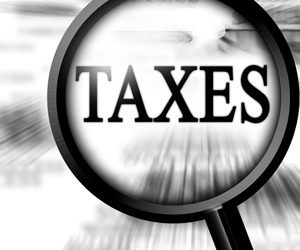Business Execs Expect Corporate Tax Reform in 2017 or 2018
As the US Congress and Administration debate reform of the US tax system, The Tax Council’s and Ernst & Young LLP’s latest Tax Reform Business Barometer polled business executives, including tax directors and government relations executives, on the topic.
Jun. 21, 2017

As the US Congress and Administration debate reform of the US tax system, The Tax Council’s and Ernst & Young LLP’s latest Tax Reform Business Barometer polled business executives, including tax directors and government relations executives, on the topic.
House Republican Blueprint for Tax Reform (the Blueprint)
Expectations for release of statutory language for the Blueprint have tempered since the January 2017 Barometer, with 36% of May 2017 respondents believing statutory language will be released in September or October 2017 and 29% believing statutory language will be released in July or August 2017. In the January 2017 Barometer, half of respondents believed there was a 40% likelihood that statutory language would be released before the end of April 2017.
Expectations for the timing of the release of statutory language
If the border adjustment provision is not retained in the Blueprint, 39% of respondents expect a higher corporate income tax rate and 27% of respondents expect base erosion-type provisions similar to those proposed in Chairman Camp’s 2014 tax reform plan as the most likely alternatives to replace the revenue that would have been generated by the border adjustment provision.
“Border adjustments and their revenue implications are an important part of the discussion happening in Congress and the Administration around tax reform,” said Robert Carroll, National Director of Quantitative Economics and Statistics (QUEST) for Ernst & Young LLP. “Many businesses have already modeled the Blueprint. They can get a head start on the next phase of the debate by looking closely at potential changes in some of the key aspects of the Blueprint and modeling its effects on their company, industry and markets.”
Tax reform proposal from the Senate Finance Committee
When asked for their thoughts on the most likely direction of the Senate Finance Committee Chairman in preparing a tax reform plan, 38% of respondents believed that the Chairman will likely release a plan similar to Camp’s 2014 tax plan. Many respondents (29%) believe that the Chairman will likely release a plan integrating individual and corporate taxes, while a similar percentage (21%) believe no plan will be released at all.
Expectations for the direction of tax reform in the Senate
Modeling tax reform
Almost all respondents (80%) indicated their organization is performing or has performed some modeling of the potential impacts of tax reform on their organization’s (or members’/clients’) federal tax liability. Of these respondents, most (92%) have modeled the impacts of the Blueprint, while only 62% and 50% have modeled the impacts of the Camp and Trump tax plans, respectively. Only 9% of respondents participating in modeling their organization’s federal tax liability indicated they have modeled an integration plan.
- In general, organizations are taking steps to model various tax plans — 58% are modeling the impacts on their organization’s competitive positions in its industry and 54% are modeling the potential impacts on their organization’s markets.
- Organizations are primarily focused on modeling the potential impacts of the House Blueprint model — most respondents (77%) are modeling the impacts of the Blueprint on their organization’s federal tax liability, competitive market positions or markets.
Prospects for federal tax reform
In every Barometer since February 2014, respondents have consistently viewed 2017, the first year of a new administration’s term, as the most likely year for enacting federal tax reform. In the May 2017 Barometer, many view 2018 as the most likely year for enacting tax reform and optimism remains that tax reform enactment will occur this year or next.
“Tax reform could be a multi-year process with considerable progress expected this year, so companies should be engaged,” said Lynda Walker, Executive Director of The Tax Council. “Policymakers, the business community and the public share a strong interest in a simpler, fairer tax system that is more conducive to economic growth. Even given the challenges of such a task, they know it’s possible and a worthy endeavor.”
A majority of those responding (62%) believe tax reform is likely to be enacted in 2017 or 2018 — on average, 26% of respondents believe tax reform will likely be enacted in 2017, while 36% believe tax reform will likely be enacted in 2018. In contrast, 48% of respondents in the January 2017 Barometer, on average, believed tax reform would likely be enacted in 2017, while 35% believed enactment would likely occur in 2018.
- Half of respondents gave passage of tax reform legislation at least a 50% chance in the House and at least a 23% chance in the Senate.
- Approximately 75% of respondents think reform will be comprehensive, similar to the 73% of respondents from the January 2017 Barometer.
To view the full report, please visit http://www.ey.com/us/en/services/tax/tax-policy/business-tax-reform-and-trends-survey-views
